Photo: Courtesy of Dolce & Gabbana
Photo: Courtesy of Dolce & Gabbana
Nothing can prepare a person for their first Dolce & Gabbana Alta Moda experience. While there is no such thing as a “typical” Alta Moda celebration, they all center around events in astonishing and exclusive locations—this year, in Puglia—with clients and celebrities from across the globe invited to preview (and to be the first to purchase) grandiose couture collections. They started off as three-day affairs, though the clients got to liking it so much they simply wanted to stay. Days were added on, year after year, until the whole extravaganza turned into what Domenico Dolce and Stefano Gabbana now only half-ironically call “Alta Moda Fashion Week.”
What I discovered was a hedonistic, fashion-filled, five-day happening with performances and shows centered around collections of couture and jewelry, with guests appearing in outfits and scenarios so over the top they sometimes made the Met Gala look like a Buddhist retreat.
Even though I made my entrance to the party in a beautiful Dolce & Gabbana majolica print kaftan, I felt extremely underdressed. And when word got round to the other clients and journalists that I was a mere novitiate in this order, eyes were rolled.
“Wait, this your first Alta Moda?” “Yes?” I replied, suddenly filled with shame. It seemed impossible that anyone here might not be accustomed to private chauffeurs and champagne-filled days. “Consider it a baptism,” one said, with absolutely no hint of irony. “It’s a true spectacle,” added D Repubblica editor-in-chief Emanuele Farneti. “Just enjoy it.”
As I meandered and eavesdropped in the middle of the millenary olive grove where the 2023 Alta Gioielleria (high jewelry) collection was presented, an angelic man stood next to a tiny but feisty woman in her eighties. His eyes gazed solemnly at the Mediterranean horizon, while the woman, a client, admired an intricate necklace that ended in branches with leaves and large, olive-sized gems.
“Mr. Dolce was inspired by the colors of the Italian sunset for many of these jewels,” explained the man—who, as it turns out, works for Dolce & Gabbana. “Aha,” murmured the lady as she looked up at the sky with a tinge of disbelief, trying to match the jewels with the scenery. Displayed in beautiful cases all around the grove were diamonds, amethysts, emeralds, yellow and blue sapphires, pink tourmalines, hessonites, and pearls—so many stones, so many colors.
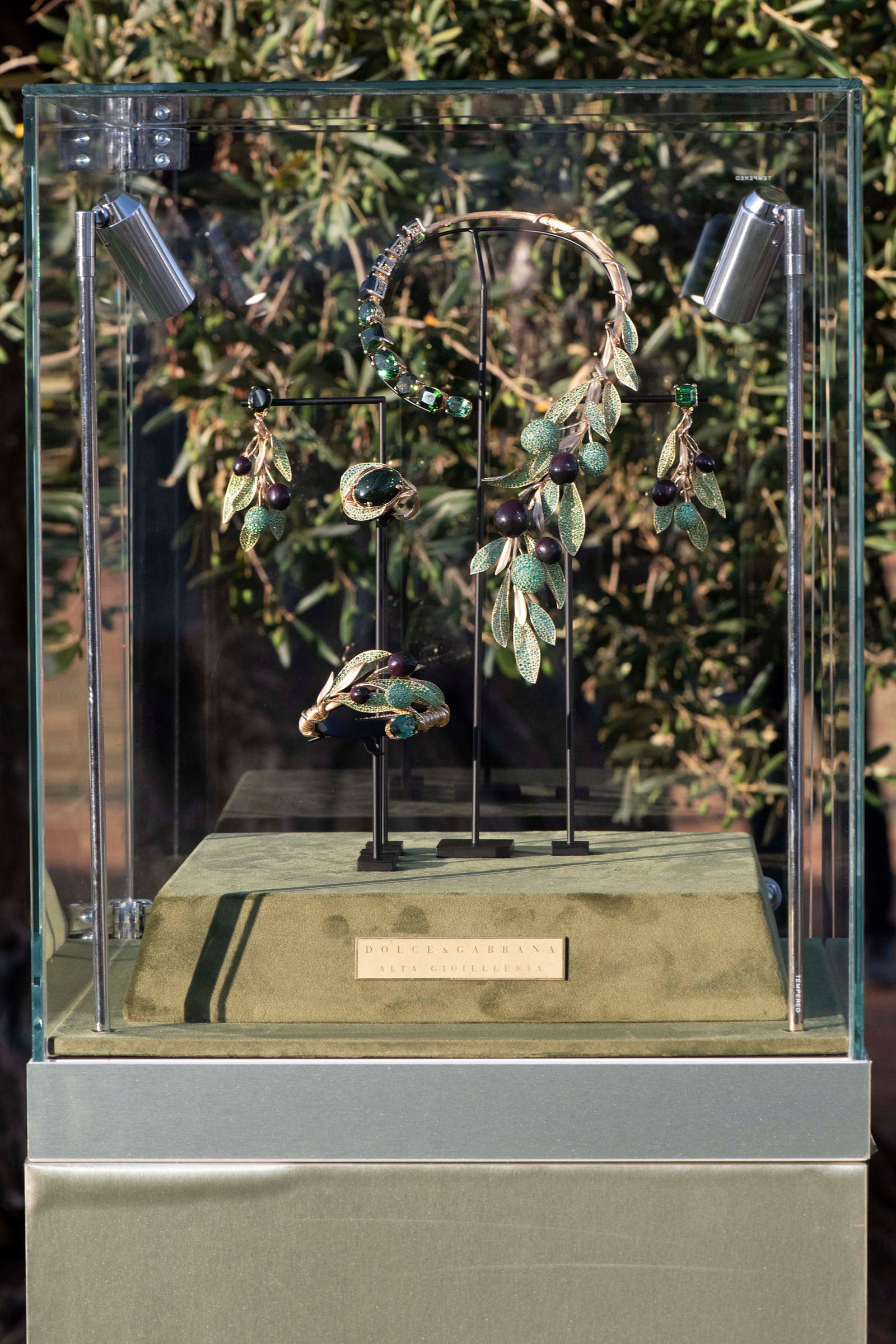
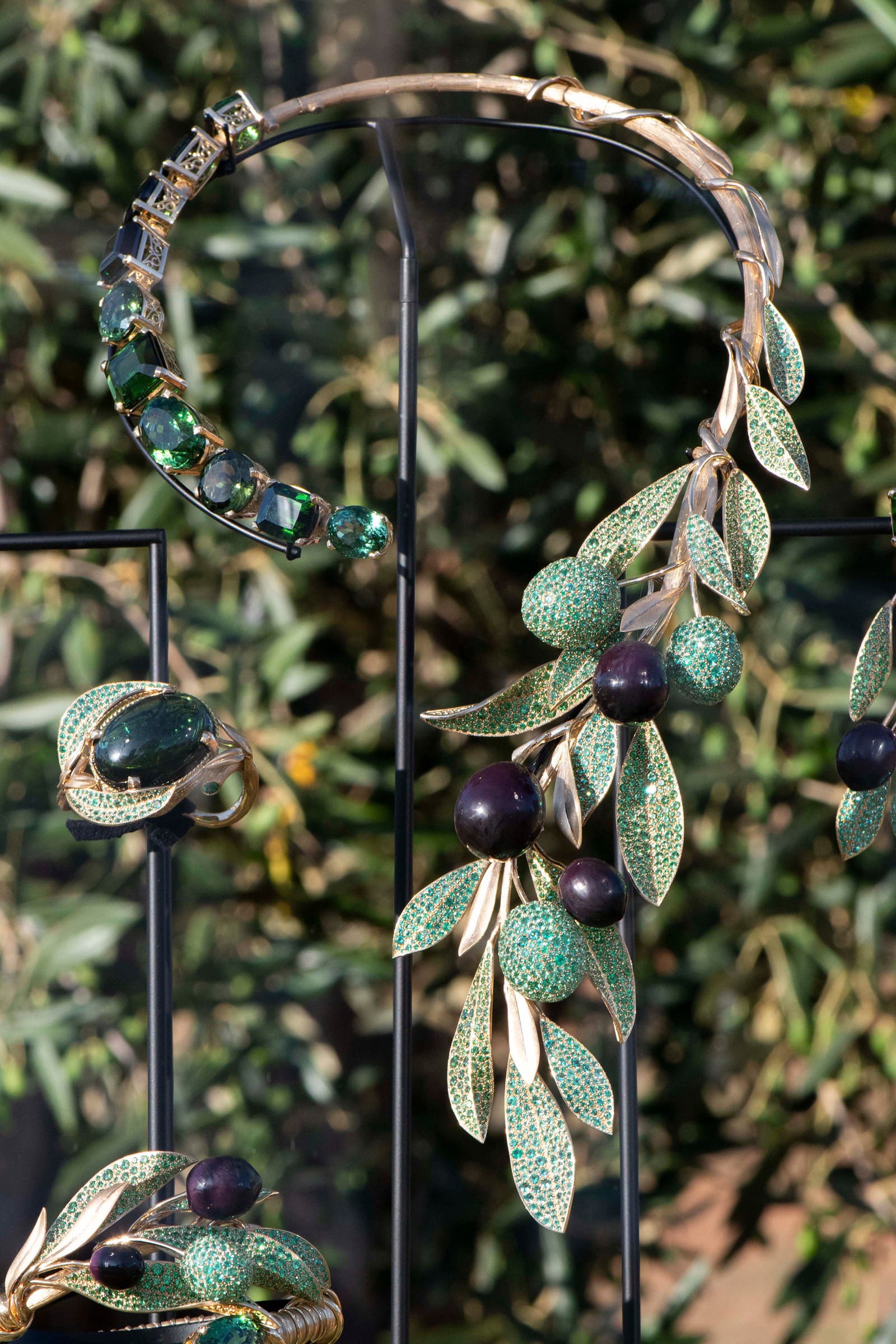
We had been whisked from the easy sunset life of caper and lavender plants in the gardens of the magical Masseria Montenapoleone to the Pettolecchia La Fortezza that night in a stream of black luxury vans, passing along the coastal highway like mysterious velvety presences, observing the lives outside our windows from our quiet, sheltered seats: a topless girl on a beach, a well-built mamma feeding her son pane e sugo (olive oil, bread, and pasta sauce), a couple of street urchins speeding by on bicycles.
“Italian authenticity” seemed to be the underlying mantra during this Alta Moda iteration, a feast of both women’s and men’s couture, jewelry, and revelry disseminated across Puglia’s enchanting towns and natural alcoves and dedicated to the maison’s most exclusive clients. But what, exactly, constitutes a real Italian experience?
Let’s start with ancestry: Domenico Dolce’s full name is both an omen and an homage to southern Italy’s most beloved icon: the Madonna. The designer’s full name, Domenico Mario Assunto Dolce, is a Magnificat in itself, with Assunto, from the Latin assumpta, meaning assumed, referring to the Assumption of the Virgin Mary into heaven. Nomen est omen, the Romans used to say: The name is a sign.
Dolce and Stefano Gabbana explained the vision behind this year’s astounding collection while sipping almond-milk-stained caffè leccesi in the shade of the pergolato of the sprawling luxury resort of Borgo Egnazia, a vast assemblage of buildings constructed in the manner of a charming village. “We took inspiration for the show from the very origins of the town of Alberobello,” Gabbana said. “We wanted to take a photograph of a holiday and mix it with real life—recreate a dream within the village.”

For the show, the designers worked with local artisans, bread makers, and seamstresses, mixing them with models to recreate a dreamy rendition of the village’s former life. The most iconic feature of the astonishing women’s collection were the trullo-shaped headpieces—inspired by Alberobello’s magical white-washed, cone-shaped stone huts, built in the 14th century—atop dresses printed with visions of Apulian architecture. Many of the clothes were also inspired by local basket-weaving techniques, with lace, tulle lashings, chiffon, satin, and organza taking the place of the usual straw. Instead of handbags, the models carried bread baskets–– the ultimate radical chic gesture. The world conjured was one where diamonds and simmering pasta sauce coexist—where a grandmother or an aunt screaming “A tavola!” to gather kids around the table might do so in a chiffon dress. This was the designers’ fantasia of an olive-oil-and-bread simplicity—or, as they call it, “cooking the Alta Moda way.”
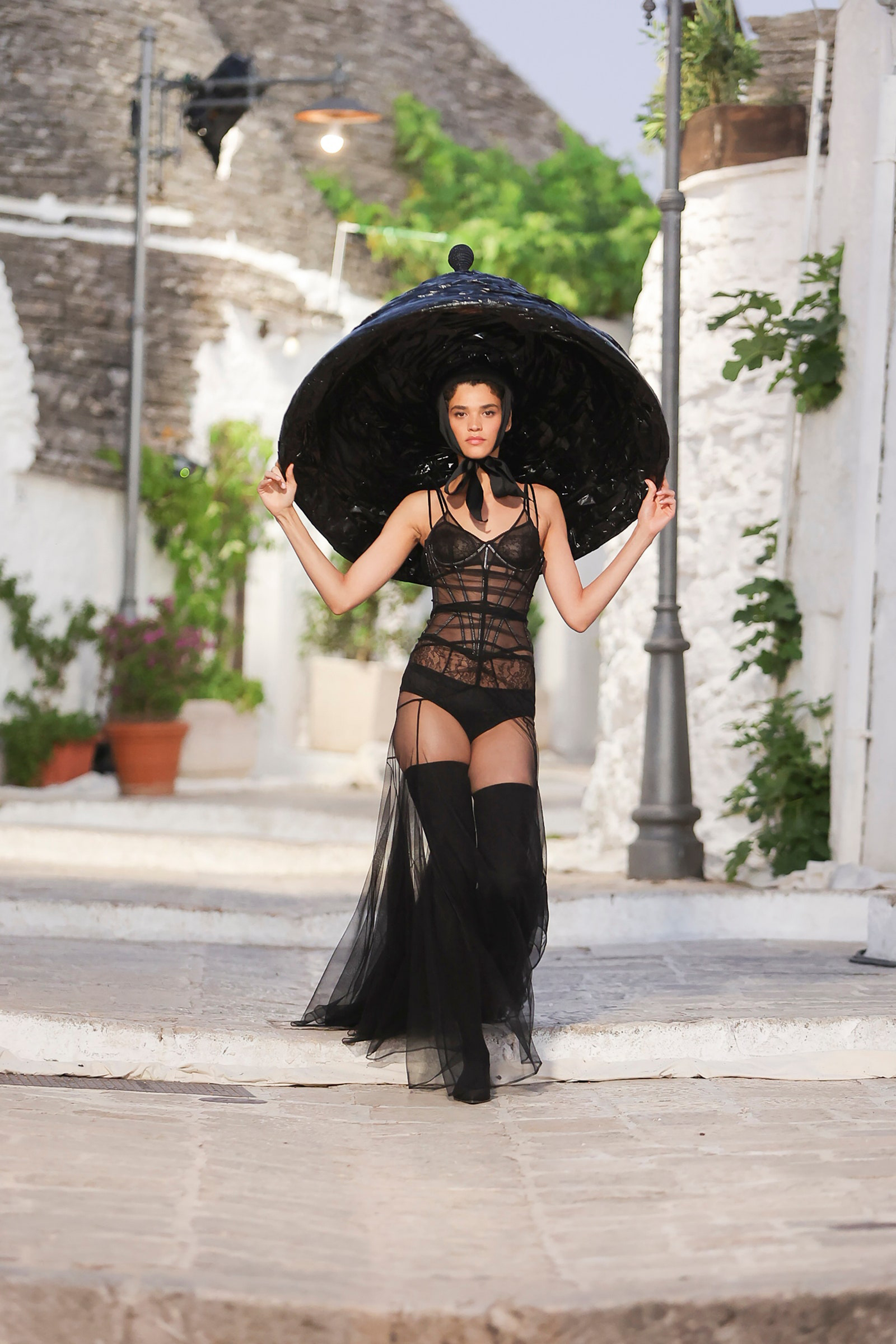
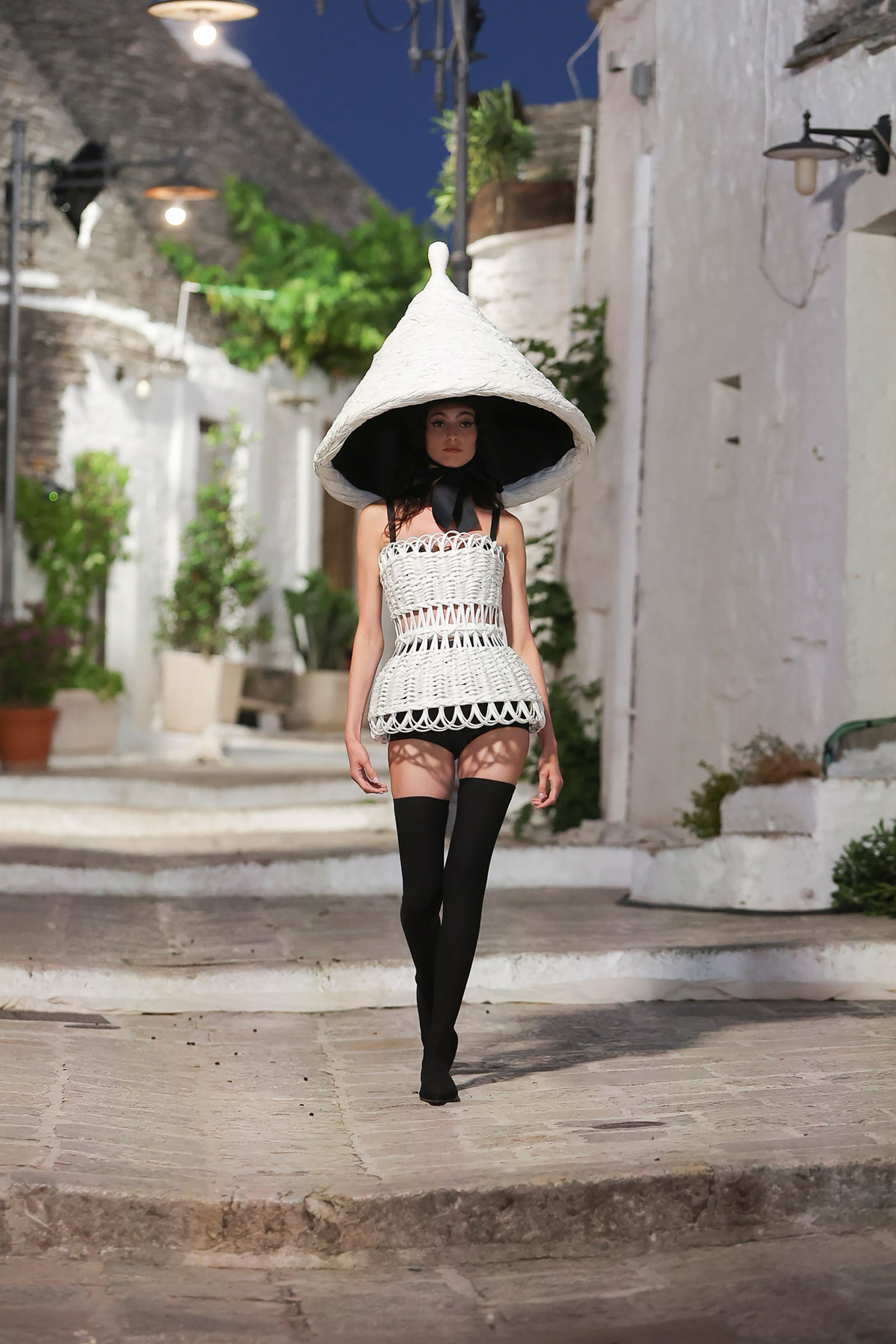
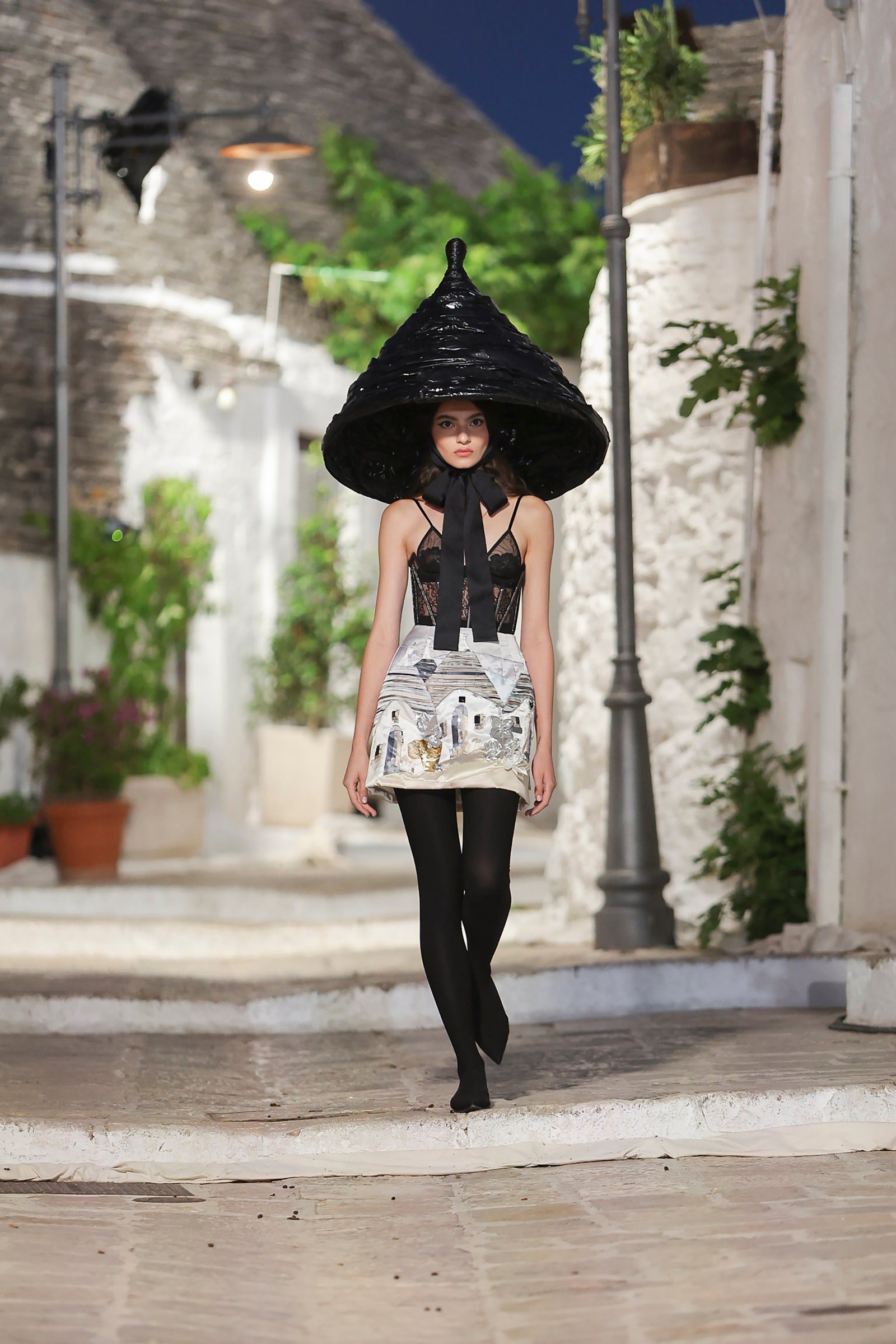
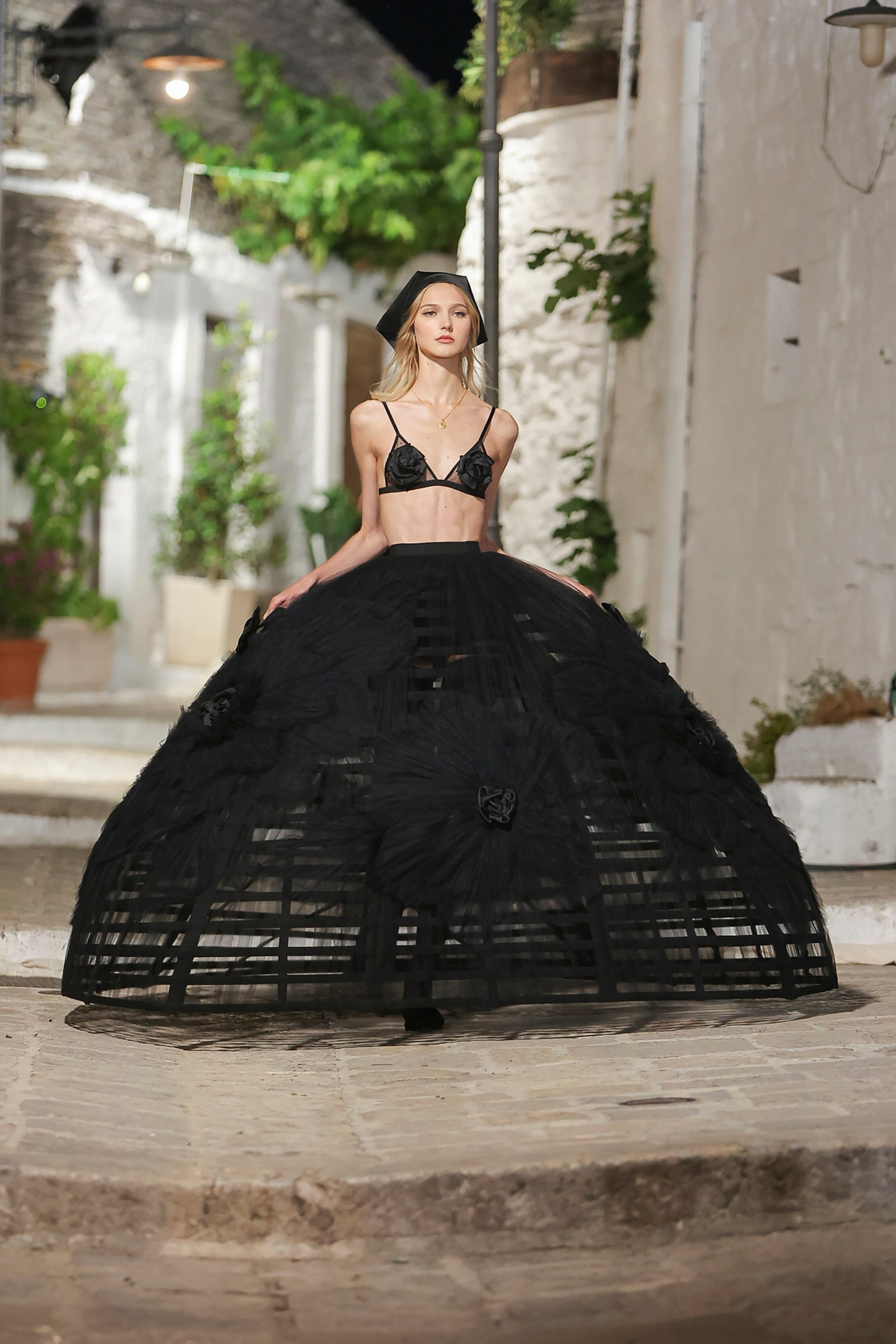
I loved the fact that they explained the collection through food and family metaphors—which in Italy also speak to the intricacies of life. After all, Italians coined the expression “Parla come mangi!”—“Speak the language of your food.”
“La mamma, la nonna, la zia—these are the most authentic people of the Alta Moda life,” Dolce said, and while this is undoubtedly true, most compatriots I know have never had the pleasure of stirring tomato sauce for a family dinner in 59-carat green diamond necklaces. They will also confirm that it is almost impossible to visit towns like Ostuni, Alberobello, or Siracusa (last year’s Alta Moda location) without the hassle of long lines and overheated crowds braying for wi-fi connections so they can post their live stories.

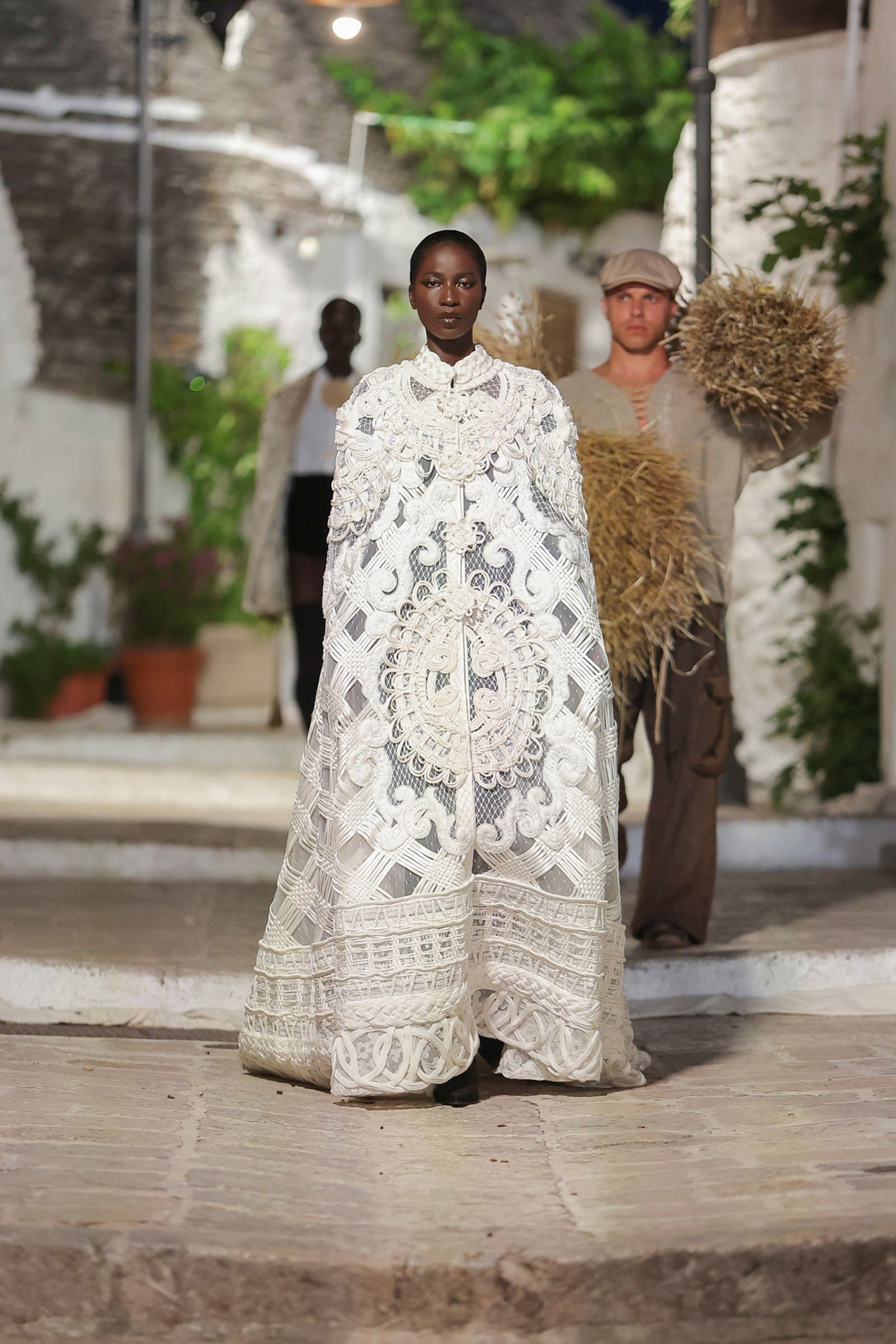
Valerie Cooper—here with her husband, Harry, one of Dolce & Gabbana’s legendary clients, from La Jolla, California and wearing a remarkably sexy lacy pink ensemble from a previous Alta Moda show—appreciated the familial element of the event more than anything.
“To add the Alta Moda masterpieces in these grand settings—it becomes a real-life fantasy,” she said. “It is a family of fashionistas—friends who become lifelong friends, along with the fun and joy of meeting new people.” Shawn Goodman, another longtime client from the US whose Instagram handle is Dolce Vita Too (and who walked away from the event with one of the most significant pieces in the jewelry collection), agreed.
“We all look forward to our summer week together, and I’m humbled to be such good friends with the family,” he said. “Domenico, Gui (Siqueira, Dolce’s boyfriend), and Stefano and all the family make you always feel loved, beautiful, and at home.”
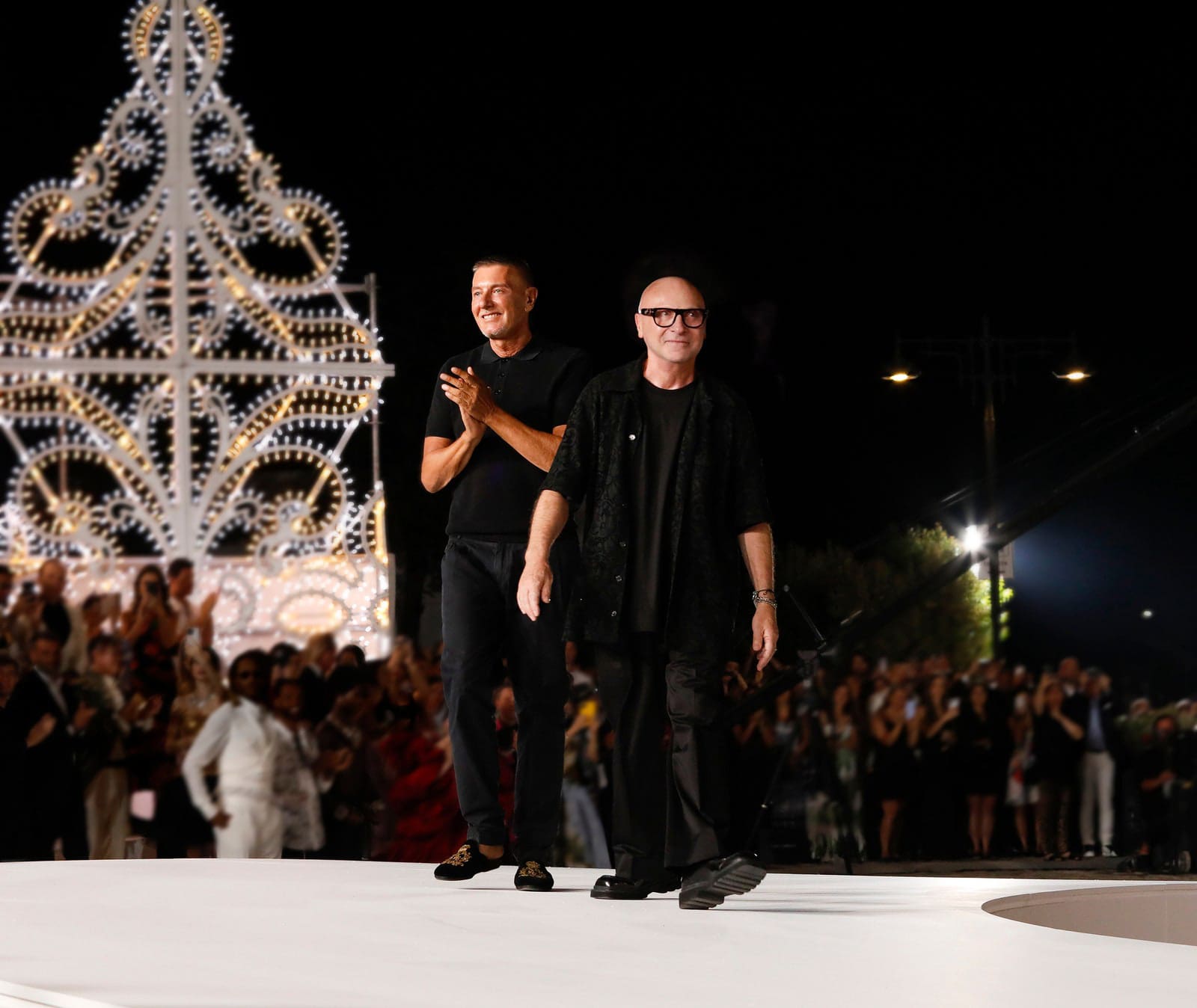
At the Pettolecchia La Fortezza, I meandered through the olive grove, one of the few that hasn’t been attacked by a brutal bacteria that’s been ravaging the area. (Helen Mirren, who owns a house in Puglia and was part of all the festivities, has founded an organization, Save the Olives, to combat this ecological disaster.) Artists and acrobats flown in from Tanzania performed in front of the masseria’s ancient fort; there were wrestling matches, javelin-launching performances, human pyramids with men in sexy golden trunks. At one point, a beautiful Russian girl sat next to me to catch her breath. When I asked her what she did in life, she told me that she still had no idea, but was maybe thinking about becoming a writer. “I love words,” she said, vaguely, just as her princely boyfriend swept her away.
There were embroidered golden capes, a high priestess-looking woman straight out of a tarot deck, millionaire teen rappers with record label contracts and hit songs about their bar mitzvahs, men in wigs, goats, sheep, women in crowns or Roman-column-shaped headpieces, a Cicciolina lookalike.
It was like a commedia dell’arte, with the ease of luxury mixed (for the clients, at least) with the thrill of being the first to purchase—via an exclusive WhatsApp group— a much-desired object: Whoever texted about an item first had first pick. (And while I fantasized about The Real Housewives of Beverly Hills-style cat fights and drama, I later discovered that each client simply told their direct Dolce associate their favorite looks as they walked down the runway.)

Back to that Italian family, though: When my grandfather Luigi was young, he wrote a bestseller called The Italians, a deeply ambivalent cultural bible about our country’s traditions that is still surprisingly relevant today. There is one sentence I always turn to when trying to decipher my own country’s character: “Italians judge men and events less by what they read or learn, and far more by what they see, hear, touch, or smell… They are naturally inclined towards arranging a spectacle, acting a character, staging a drama, to the point that they do not countenance life when it is reduced to unadorned truth.” I thought about his words and, after a while, I finally got it: It wasn’t the Alta Moda bread-and-olive trope that was going to convince me we were in an authentically Italian experience; it was the circus element itself.
“Realism is a bad word,” Fellini once said. “In a sense, everything is realistic. I see no line between the imaginary and the real.” He loved performances, outrageous costumes, and making the extraordinary a reality. In the first scene of his 1970 film The Clowns, a child wakes up in the middle of the night and realizes the circus is setting up camp in his village, which soon becomes a portal into a world of wild imagination and excitement. In Alberobello and Ostuni, Dolce and Gabbana managed to recreate that exact sense of childlike awe: Wide-eyed townspeople lingered on balconies, rooftops, and bars to gawk at the sealed-off streets. They looked like Fellini’s little boy.
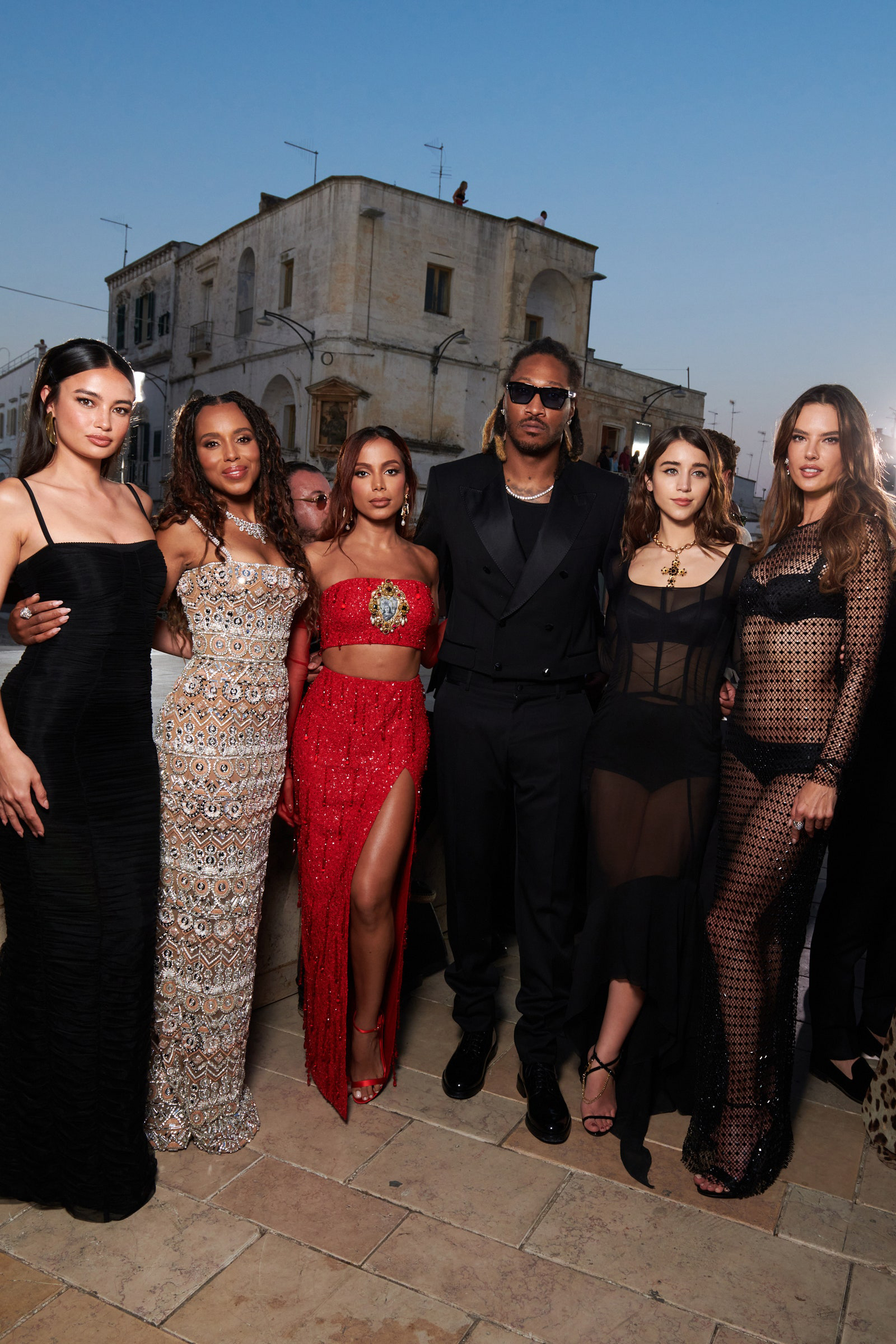
But Dolce and Gabbana also support Mirren’s foundation, and in homage to Alberobello they repaved parts of the main road, returning white ciottolato stones back to their original place. By way of explanation, Dolce simply quoted a Sicilian proverb: “Zuccaru nun guasta bevanda”—a little extra sugar won’t harm your drinks, meaning that you can never have too much of a good thing.
Those newly restored roads were flanked by artisans working on their crafts: Weavers, bakers, seamstresses, and shepherds mingled with Texans in Alta Moda gladiator outfits while the Brazilian artist Romero Britto flaunted his own self-portrait embroidered by Dolce Gabbana on the back of his jacket. A woman sat with a bowl of water filled with olive oil—an ancient technique to determine whether someone had received the evil eye. You could pause and snack on tarallucci, hang out with curious children, talk to the women who were weaving or jewelers beading their work.
When we reached the bottom of the road the square opened up, and before the runway show the spectacle of the arrivals began: Mirren, Angela Bassett, Christian Bale with his wife and son, Kris Jenner, Fran Drescher, Mariacarla Boscono. And then, after we’d all been sitting under the sun for an hour, we heard the sound of screaming from the street nearby. Like a true empress, Kim Kardashian made her appearance—in a purple off-the-shoulder gown with a long train—flying in for a few hours while in the middle of shooting American Horror Story. “I show up for my people,” she said, when I congratulated her on being such a good sport. When I interviewed her for this month’s Vogue Italia story, we talked about her ability to remain calm amidst madness, and now I was getting a chance to see her in action: “I thrive in chaos,” she had said—and this, I realized, made her the perfect muse for Dolce & Gabbana.
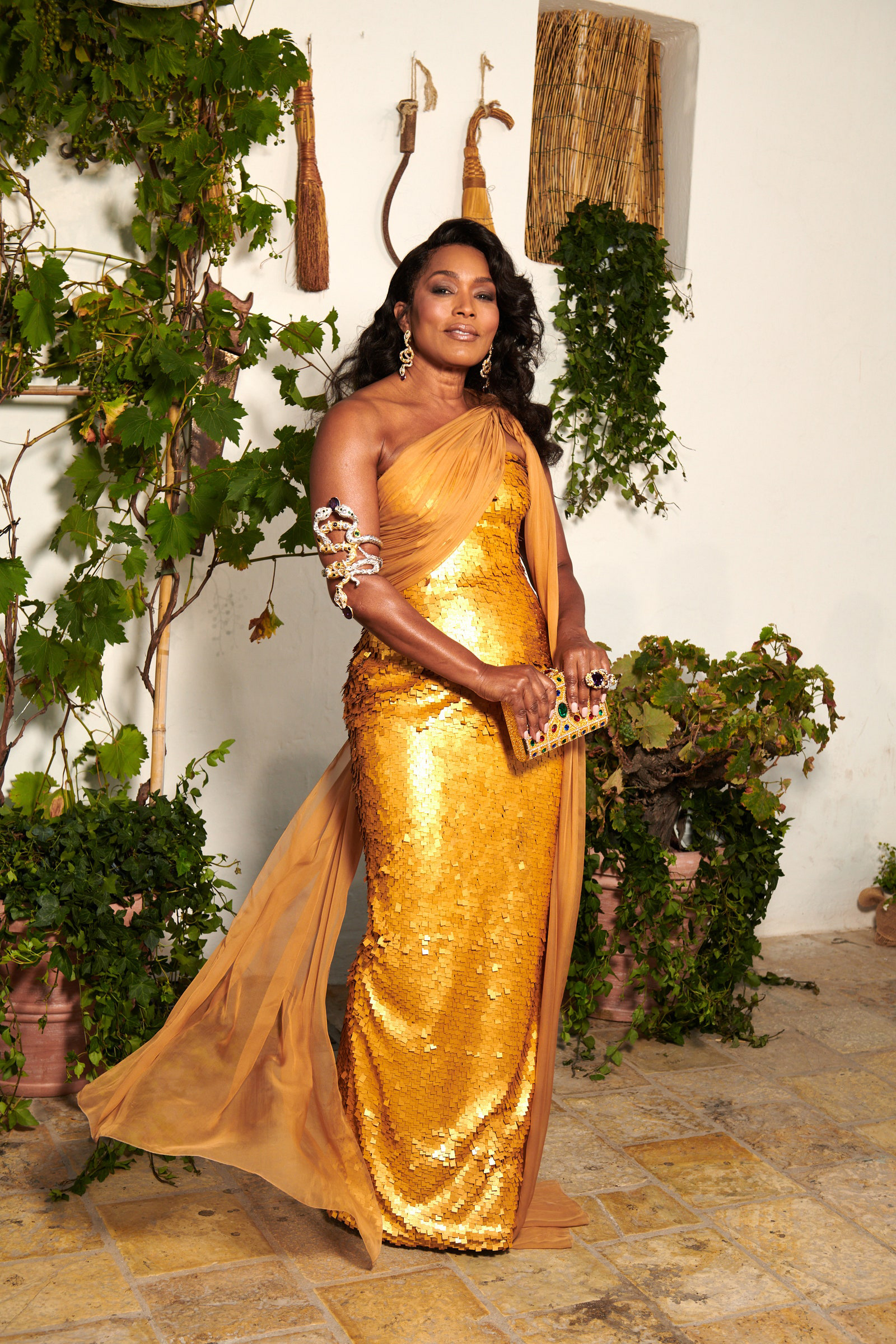

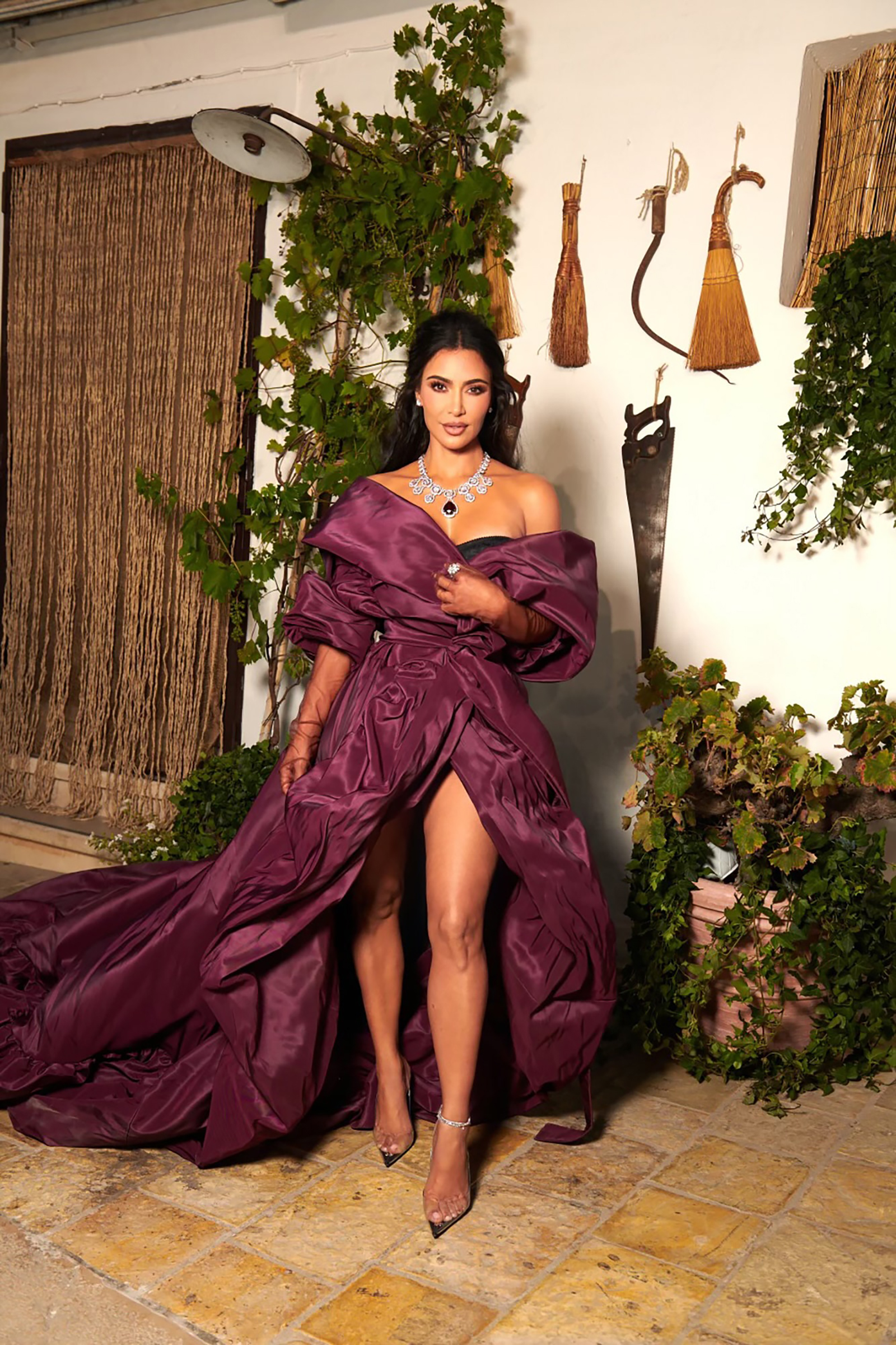
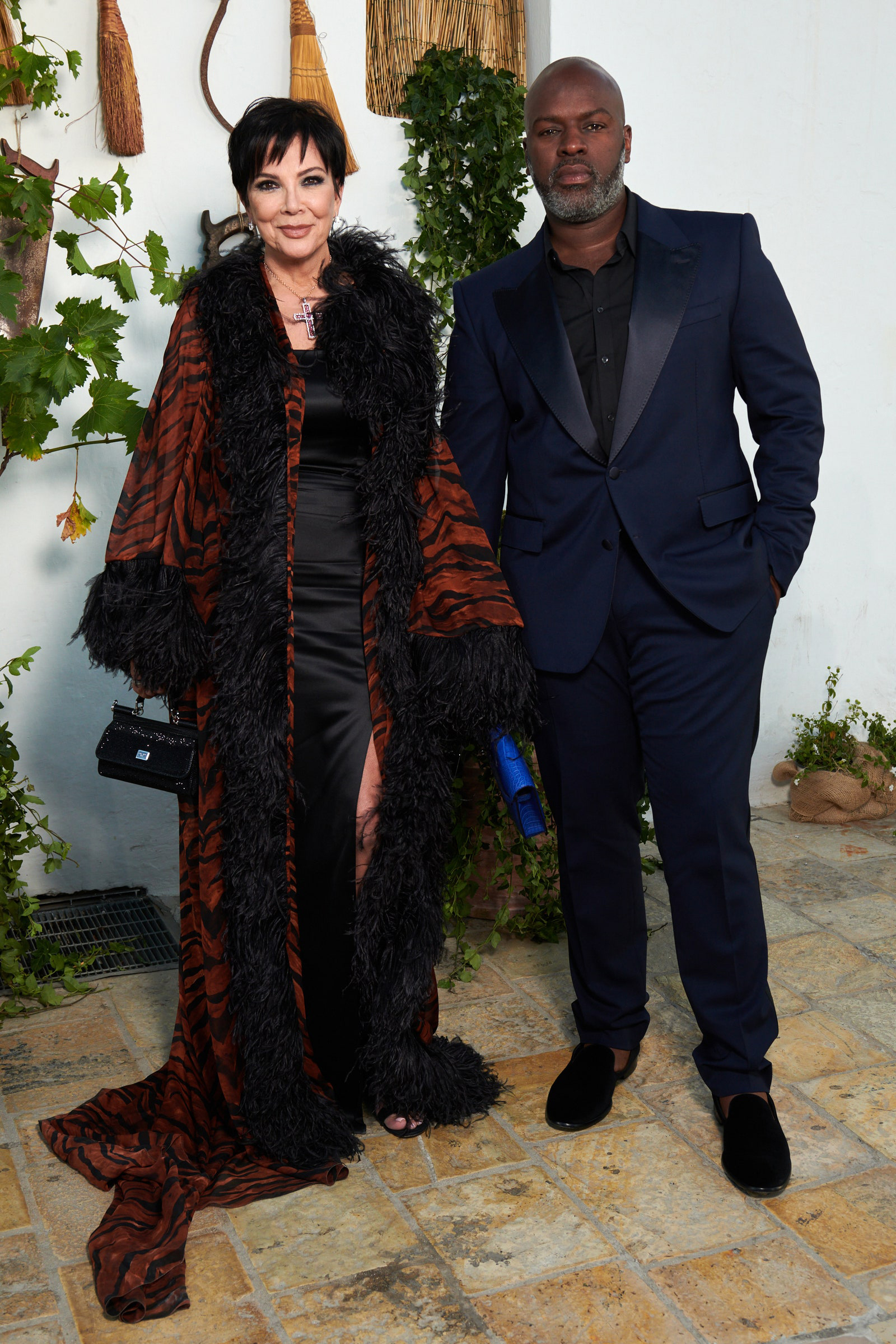
No Italian ceremony is complete without the presence of a priest. On the night after the men’s show in Ostuni, the horses on parade draped in jewels, Monsignore Alberto Rocca, the director of the Pinacoteca Ambrosiana, floated across the white pietra taurina floors of the large main square. He was so elegant and striking that a lot of people thought he might actually be a model wearing a Dolce & Gabbana outfit. (We were only confused because no precious stones appeared on a hanging cross.) “Is he the real deal?” a friend asked. “He looks so hot!”
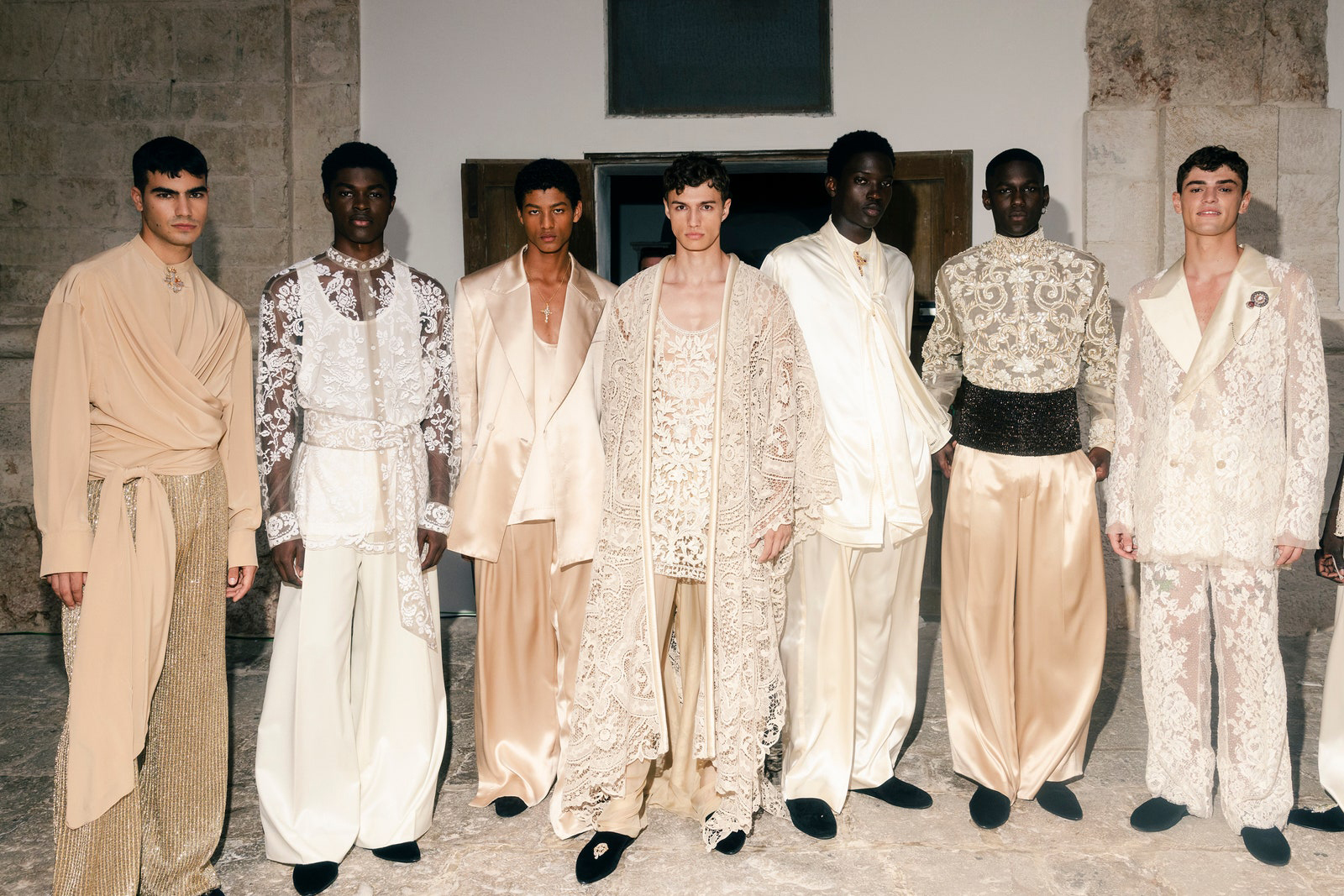
Tension built as we waited for the models to walk in the suits that had been created from fabrics of ancient corredos, or bridal kits. The horses appeared jittery, nervous—even the swallows in the sunset sky seemed to be going crazy, moving to the rhythm of the pizzica music blasting from the speakers in the square. And suddenly I was inundated with a sense of doom: What if the horses galloped away? What if they started a revolution and jumped over the catwalk? What if the birds attacked us like in a Hitchcock film? I found myself praying that nothing would go wrong—which, I realized only later, was a clear sign that my initiation to Alta Moda was complete.
We hoped the townspeople would keep smiling and saying that this was as enchanting for them as it was to the rest of us—that we could all thrive together among the controlled chaos and remain suspended in that fantasy world for as long as possible. Of course, everything turned out to be spectacular, a fact that we all celebrated with wine and cocktails shortly afterward. In fact, the only hard part about these Apulian days is that nothing can prepare you for what it feels like to eventually return home to messy children’s rooms and large amounts of laundry.
But I can keep dreaming.
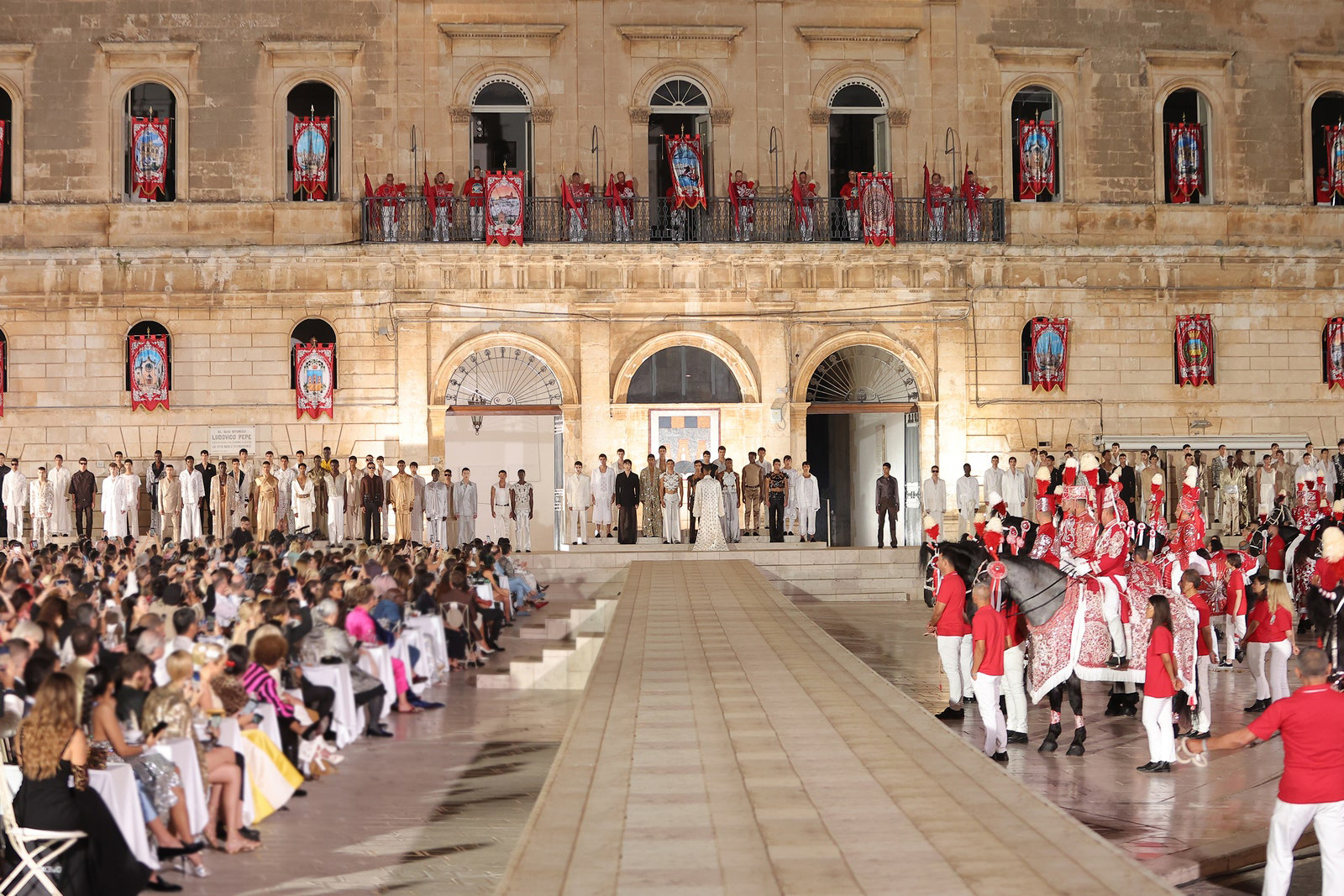
This article was originally published on Vogue.com
